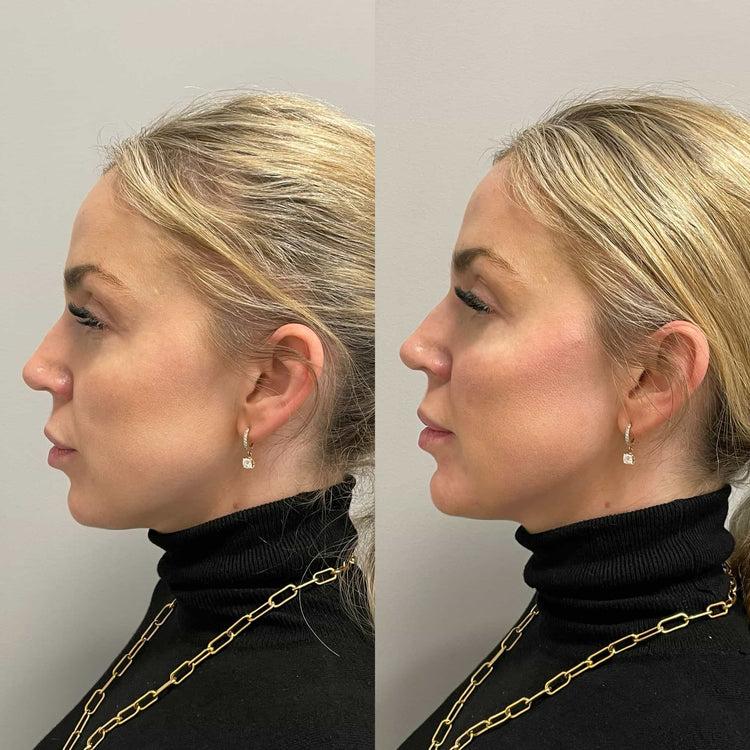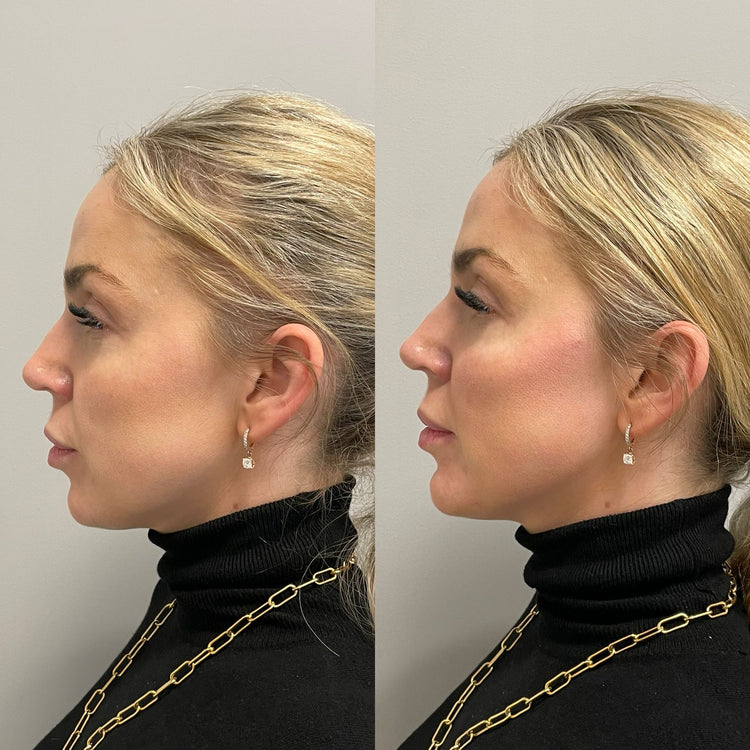Dermal Fillers
Looking to rejuvenate your appearance without going under the knife? Non-surgical liquid facelifts, utilizing dermal fillers, are gaining immense popularity in the UK. These injectables offer a range of benefits, from smoothing wrinkles and plumping lips to enhancing cheekbones and restoring facial volume.
Hyaluronic Acid Fillers
Hyaluronic acid fillers stand out as the most popular type of dermal filler used in non-surgical liquid facelifts. This natural substance found in the body attracts and retains water, making it an effective volumizer. Hyaluronic acid fillers can be strategically injected into various areas of the face to address specific concerns.
For instance, they can soften wrinkles like nasolabial folds (smile lines) and marionette lines (lines running from the corners of the mouth downward), plump up thinning lips, enhance cheekbones for a more sculpted appearance, and restore volume to areas that have lost fullness due to aging.
Poly-L-Lactic Acid (PLLA) Fillers
Another popular non-surgical option is Poly-L-Lactic Acid (PLLA) fillers. Unlike hyaluronic acid, PLLA is a synthetic, biodegradable material. When injected, it stimulates collagen production in the treated area.
This gradual increase in collagen over several months leads to a longer-lasting volumizing effect compared to hyaluronic acid fillers. PLLA is often used for facial contouring, addressing deep wrinkles and folds, and improving skin elasticity.
Botox and Neurotoxin Injections
Beyond dermal fillers, neurotoxin injections are another popular non-surgical technique used in liquid facelifts. These injections, commonly known as Botox, work by temporarily paralyzing the muscles responsible for facial expressions. This can effectively reduce the appearance of dynamic wrinkles, those that form due to repetitive muscle movements, such as frown lines, crow’s feet, and forehead wrinkles.
Forehead Lines
Botox is a neurotoxin injection derived from botulinum toxin, which temporarily paralyzes muscles responsible for facial expressions. When injected into the forehead, it smooths out dynamic wrinkles caused by repeated muscle contractions. Forehead lines, also known as frown lines or horizontal wrinkles, are commonly treated with Botox injections to create a smoother and younger-looking forehead.
Crow’s Feet
Crow’s feet are fine lines that appear at the corners of the eyes, often deepening with age and sun exposure. They form due to repeated muscle contractions associated with smiling, squinting, or laughing. Neurotoxin injections, such as Botox, can effectively reduce the appearance of crow’s feet by temporarily paralyzing the muscles responsible for these expressions.
When injected near the outer corners of the eyes, Botox prevents the muscles from contracting as forcefully, smoothing out the wrinkles and creating a more youthful appearance. The effects of Botox are typically temporary, lasting for several months before needing repeat injections to maintain the results.
Bunny Lines
Bunny lines are those tiny wrinkles that appear on the sides of your nose when you scrunch up your nose or make certain facial expressions. They are caused by repeated muscle contractions in the area around your nose.
Neurotoxin injections, such as Botox, can be used to reduce the appearance of bunny lines. By temporarily paralyzing the muscles responsible for causing these wrinkles, Botox can smooth out the skin and minimize their visibility.
Gummy Smile Treatment
Gummy smile treatment aims to address an overactive upper lip muscle, which causes excessive gum exposure when smiling. Neurotoxin injections like Botox can be used to target this muscle, temporarily weakening it and reducing the degree of gum show when smiling. This creates a more balanced and aesthetically pleasing smile.
Botox injections work by temporarily paralyzing muscles, and in the context of gummy smiles, they are injected into the muscle responsible for lifting the upper lip too high during smiling. By relaxing this muscle, Botox allows the smile to appear more natural with less gum exposure.
Microneedling
Microneedling is a minimally invasive cosmetic procedure that involves using tiny needles to create controlled micro-injuries in the skin. These micro-injuries stimulate the body’s natural healing process, leading to collagen and elastin production, which can improve skin texture, reduce wrinkles, and minimize acne scars.
During microneedling, a device with fine needles is rolled or stamped across the skin surface. The depth of needle penetration can be adjusted depending on the desired results and skin concerns. The micro-injuries trigger the release of growth factors and other signaling molecules that stimulate cell regeneration and collagen synthesis.
The increased collagen production helps to improve skin elasticity, reduce fine lines and wrinkles, and minimize the appearance of scars. Microneedling can also be used to enhance the absorption of topical skincare products by creating channels in the skin.
Chemical Peels
Chemical peels involve applying a chemical solution to the skin to remove the top layers. This process exfoliates the skin, revealing smoother, fresher skin underneath. Chemical peels come in varying strengths, targeting different skin concerns such as wrinkles, acne scars, hyperpigmentation, and uneven skin tone.
Superficial peels use milder acids like glycolic acid or salicylic acid, affecting only the epidermis (top layer of skin). Medium peels utilize stronger acids like trichloroacetic acid (TCA), penetrating deeper into the dermis (second layer of skin), resulting in more noticeable improvements. Deep peels involve the strongest acids like phenol and are reserved for addressing severe skin issues like deep wrinkles or sun damage. They require a longer recovery period.

Platelet-Rich Plasma (PRP) Therapy

Platelet-Rich Plasma (PRP) therapy is gaining traction as a non-surgical rejuvenation option. It involves extracting a patient’s blood, separating the platelet-rich plasma from other blood components, and then injecting it into targeted areas of the face.
PRP is rich in growth factors that stimulate collagen production, leading to improved skin texture, reduced wrinkles, and enhanced volume. This therapy can be used for facial rejuvenation, improving the appearance of scars, and treating hair loss.
- Chin Augmentation With Chin Filler Near Titsey, Surrey - June 22, 2025
- Chin Augmentation With Chin Filler Near Farleigh, Surrey - June 20, 2025
- What Are The Most Popular Non-surgical Liquid Facelift Techniques In The UK - June 18, 2025


